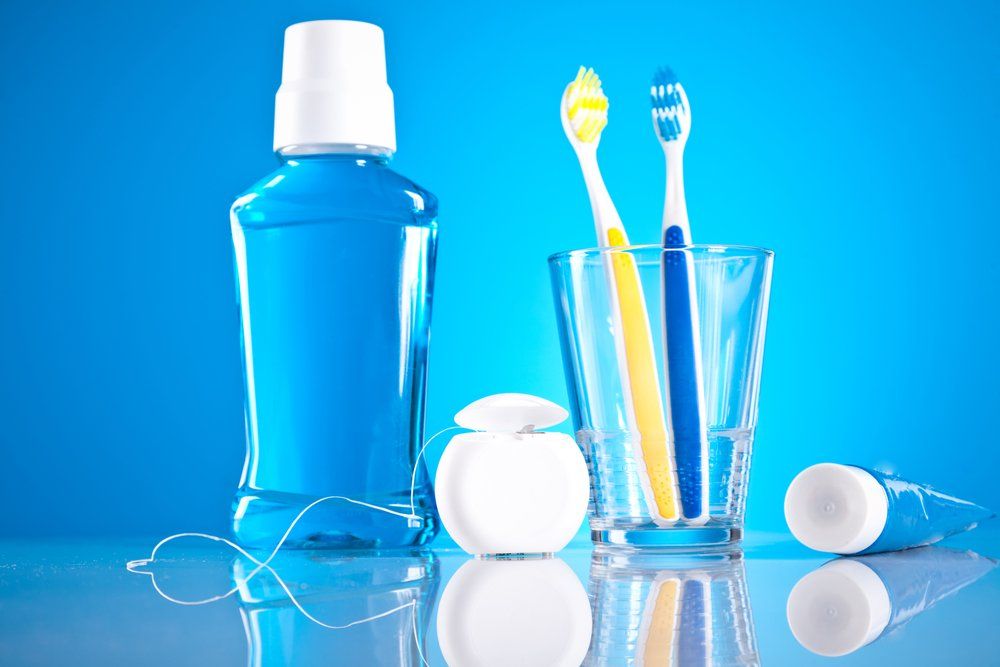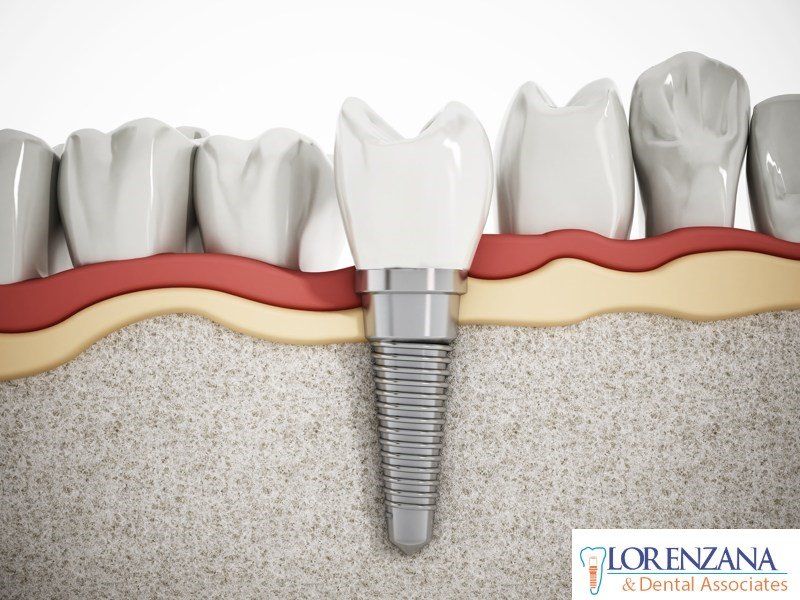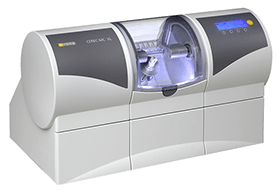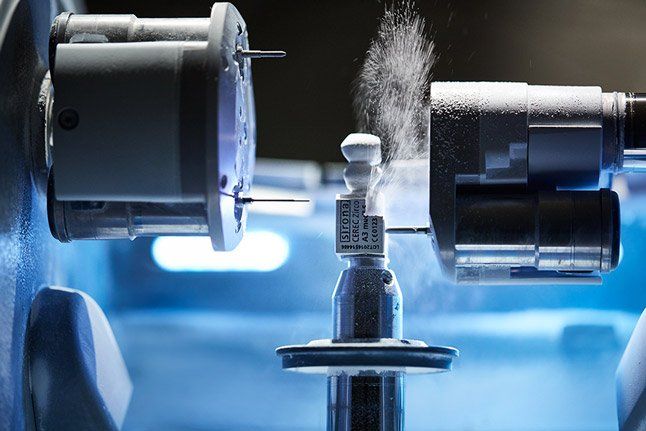Antibiotics before dental procedures.
Dr. Rafael Lorenzana • October 3, 2014
At times physicians and dentists recommend that a patient take antibiotics before certain dental procedures. This is called “antibiotic prophylaxis.”
But why do healthcare providers suggest this extra step? We all have bacteria in our mouths, and a number of dental treatments—and even daily routines like chewing, brushing or flossing—can allow bacteria to enter the bloodstream (bacteremia).
For most of us, this isn’t a problem. A healthy immune system prevents these bacteria from causing any harm. There is concern, however, that for some people bacteremia can cause an infection elsewhere in the body.
Who is at risk?
Antibiotic prophylaxis is recommended for a small number of people who have specific heart conditions.
The American Heart Association has guidelines identifying people who should take antibiotics prior to dental care. According to these guidelines, antibiotic prophylaxis should be considered for people with:
- Artificial heart valves.
- A history of an infection of the lining of the heart or heart valves known as infective endocarditis.
- A heart transplant in which a problem develops with one of the valves inside the heart.
- Heart conditions that are present from birth, such as:
- Unrepaired cyanotic congenital heart disease, including people with palliative shunts and conduit.
- Defects repaired with a prosthetic material or device—whether placed by surgery or catheter intervention—during the first six months after repair.
- Cases in which a heart defect has been repaired, but a residual defect remains at the site or adjacent to the site of the prosthetic patch or prosthetic device used for the repair.
Antibiotic prophylaxis guidelines also have been developed for people who have orthopedic implants such as artificial joints. In 2012, the ADA and American Association of Orthopedic Surgeons updated the recommendations and no longer recommend antibiotics for everyone with artificial joints. As a result, your healthcare provider may rely more on your personal medical history to determine when antibiotics are appropriate for people with orthopedic implants. For example, antibiotic prophylaxis might be useful for patients who also have compromised immune systems (due to, for instance, diabetes, rheumatoid arthritis, cancer, chemotherapy, and chronic steroid use), which increases the risk of orthopedic implant infection. If you have a heart condition or an orthopedic implant, talk with your dentist or physician about whether antibiotic prophylaxis before dental treatment is right for you.
Why did the guidelines change?
The guidelines are re-evaluated every few years to make sure that they are based on the best scientific evidence. These reviews have uncovered no evidence that taking antibiotics before dental treatment prevents infections of the heart or orthopedic implants. Therefore, for most people, the known risks of taking antibiotics may outweigh the uncertain benefits. Risks related to antibiotic use include upset stomach and allergic reactions, including anaphylactic shock (a severe allergic reaction that can be life threatening) and C. difficile infection, which causes diarrhea and other intestinal problems. Talk to your dentist about these guidelines if you have any questions about antibiotic prophylaxis. Source ( http://www.mouthhealthy.org/
)
Antibióticos antes de un procedimiento dental.
A veces los médicos y los dentistas recomiendan que un paciente tome antibióticos antes de ciertos procedimientos dentales. Esto se llama "profilaxis antibiótica."
Pero ¿por qué los profesionales de la salud sugieren de este paso extra? Todos tenemos bacterias en la boca, y una serie de tratamientos dentales como las rutinas diarias que incluyen i mascar, cepillar o usar el hilo dental, por tal hecho puede suceder que las bacterias entren al torrente sanguíneo, a esto se le conoce como :(bacteriemia).
Para la mayoría de nosotros, esto no es un problema puesto que Un sistema inmunológico saludable evita que estas bacterias causen algún daño, sin embargo, es preocupante que para algunas personas la bacteriemia puede causar una infección en otra parte del cuerpo.
Quién está en riesgo?
La profilaxis antibiótica se recomienda para un pequeño número de personas que tienen afecciones cardíacas específicas. La American Heart Association tiene orientaciones relativas a las personas que deben tomar antibióticos antes de la atención dental.
De acuerdo con estas directrices, la profilaxis antibiótica se deben considerar para personas con:
- Válvulas cardíacas artificiales.
- Historial de infecciones sobre el revestimiento de las válvulas del corazón conocida como endocarditis infecciosa.
- Un trasplante de corazón en el que se desarrolla un problema con una de las válvulas cardíacas internas.
- Las condiciones del corazón que están presentes de nacimiento, tales como: Una enfermedad del corazón congénita cianótica, incluida las personas con derivación paliativa y conductos.
- Defectos reparados con un material o dispositivo prostético, ya sea colocado mediante cirugía o intervención catéter, durante los primeros seis meses después de la reparación.
- Casos en los que un defecto del corazón ha sido reparado, pero un defecto residual que queda en el lugar, adyacente al sitio del parche protésico o dispositivo protésico utilizado para la reparación.
También pautas de profilaxis antibiótica se han desarrollado para personas que tienen implantes ortopédicos como articulaciones artificiales. En 2012, la Asociación ADA Americana de Cirujanos Ortopédicos actualizo las recomendaciones y ya no se confían antibióticos para todo el mundo con articulaciones artificiales. Por lo tanto, su Doctor puede confiar más en su historial médico personal para poder determinar cuando los antibióticos son apropiados para las personas con implantes ortopédicos. Por ejemplo, la profilaxis con antibióticos pueden ser útil para pacientes que también tienen sistemas inmunes comprometidos (debido a: la diabetes, la artritis reumatoide, cáncer, quimioterapia, y el uso crónico de esteroides), lo que aumenta el riesgo de infección de implante ortopédico. Si usted tiene una enfermedad del corazón o un implante ortopédico, hable con su dentista o médico acerca de si es adecuado para usted la profilaxis con antibióticos, antes del tratamiento dental.
¿Por qué cambian las pautas?
Las directrices son re-evaluadas cada cierto tiempo para asegurarse que estén basados en la mejor evidencia científica. Estas revisiones han ayudado al descubrimiento de evidencia que nos enseña que tomar antibióticos antes de un tratamiento dental ayuda a prevenir infecciones del corazón o de los implantes ortopédicos. Por lo tanto, para la mayoría de la gente, los riesgos conocidos de la toma de antibióticos pueden ser mayores que los beneficios inciertos. Los riesgos relacionados con el uso de antibióticos incluyen: malestar estomacal y reacciones alérgicas, incluido el shock anafiláctico (una reacción alérgica grave que puede poner en riesgo la vida) y la infección (C. difícil), que causa diarrea y otros problemas intestinales. Se le recomienda consultar a su dentista acerca de estas pautas y si existe alguna duda sobre la profilaxis antibiótica. Fuente ( http://www.mouthhealthy.org/
)
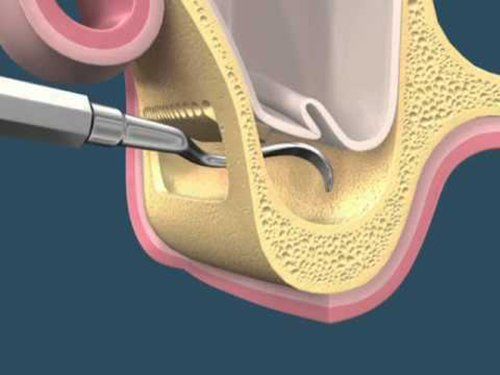
¿Qué Es? El levantamiento de seno maxilar es una cirugía que agrega hueso a tu maxilar superior en el área de tus molares y premolares. El hueso es agregado entre tu maxilar y tus senos maxilares, los cuales se encuentran a cada lado de tu nariz. A modo de hacer espacio para el hueso, la membrana sinusal necesita ser levantada. ¿Para Qué Se Usa? Un levantamiento de seno se realiza cuando no hay suficiente altura en el hueso del maxilar, o cuando los senos están demasiado próximos al maxilar, y los implantes dentales no se pueden colocar por tal motivo. Hay varias posibles razones para que esto suceda: · Muchas personas que han perdido los dientes de su maxilar superior — particularmente los dientes posteriores o molares — no tienen suficiente hueso para que los implantes dentales sean colocados. Una vez se pierde un diente, el hueso en esa área comienza a ser reabsorbido. Si los dientes han estado ausentes por un largo tiempo, con frecuencia no hay suficiente hueso restante para colocar implantes. · Se pudo haber perdido hueso debido a alguna enfermedad periodontal (de las encías). · El seno maxilar puede estar demasiado próximo al maxilar superior. La forma y tamaño del seno varía de persona a persona. El seno también puede agrandarse a medida envejeces. ¿Cómo Se Hace? Tu cirujano hará una incisión y levantará la encía donde tus dientes posteriores solían estar, exponiendo el hueso. Se hace un pequeño agujero ovalado en el hueso. La membrana que reviste el seno en el lado opuesto al agujero separa tu seno de tu maxilar. Esta membrana se empuja suavemente hacia arriba y lejos de tu maxilar. Material de injerto óseo es insertado en el espacio donde el seno solía estar. Una vez el hueso está en su lugar, el tejido es suturado. Lo Que Sigue Después del procedimiento, podrías tener algo de inflamación en el área y podrías sangrar por tu boca o nariz. No te suenes la nariz o estornudes con fuerza. Hacer eso podría causar que el material de injerto óseo se mueva y que los puntos de sutura se aflojen. Puede ser que tu dentista te prescriba medicina para prevenir el congestionamiento y la inflamación. También necesitarás medicina para el dolor, un antibiótico y enjuague bucal antimicrobiano para prevenir una infección. La mayoría de los pacientes solamente experimentarán un poco de incomodidad luego de un procedimiento de levantamiento de seno. Verás al especialista luego de algunos días. Él/ella evaluará el sitio de la cirugía y retirará los puntos de sutura si fuese necesario. Podrías tener que visitar al especialista un par de veces más para que se asegure de que el área está sanando apropiadamente. Tus implantes se colocarán entre cuatro y nueve meses después del levantamiento de seno, dependiendo de la cantidad de hueso requerida. Esto permite que haya tiempo para que el material de injerto óseo se una a tu hueso.
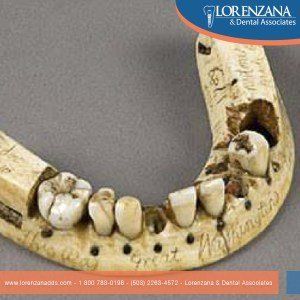
Hoy en día la prótesis dental nos permite reemplazar los dientes perdidos con un aspecto muy estético y natural, devolviendo a la boca la función perdida; pero eso no fue siempre así. Las primeras prótesis dentales de las que tenemos constancia provienen de los etruscos del siglo VIII a. C. y se conserva en el Museo de la Facultad de Odontología de París. Los etruscos utilizaron dientes de animales para reemplazar las piezas faltantes ensambladas sobre bandas de oro, lo cual muestra habilidades muy altas por parte de ellos. Creemos que los fenicios ya usaron oro blando y alambre de oro para la construcción de prótesis dentales. También utilizaron soldaduras y modelos de impresiones. Hacia 754 aC , los etruscos, hábiles artesanos de la época, producían pónticos muy complejos. Empleaban bandas de oro soldadas cada una por pónticos hechos con diferentes piezas dentales de humanos o animales.
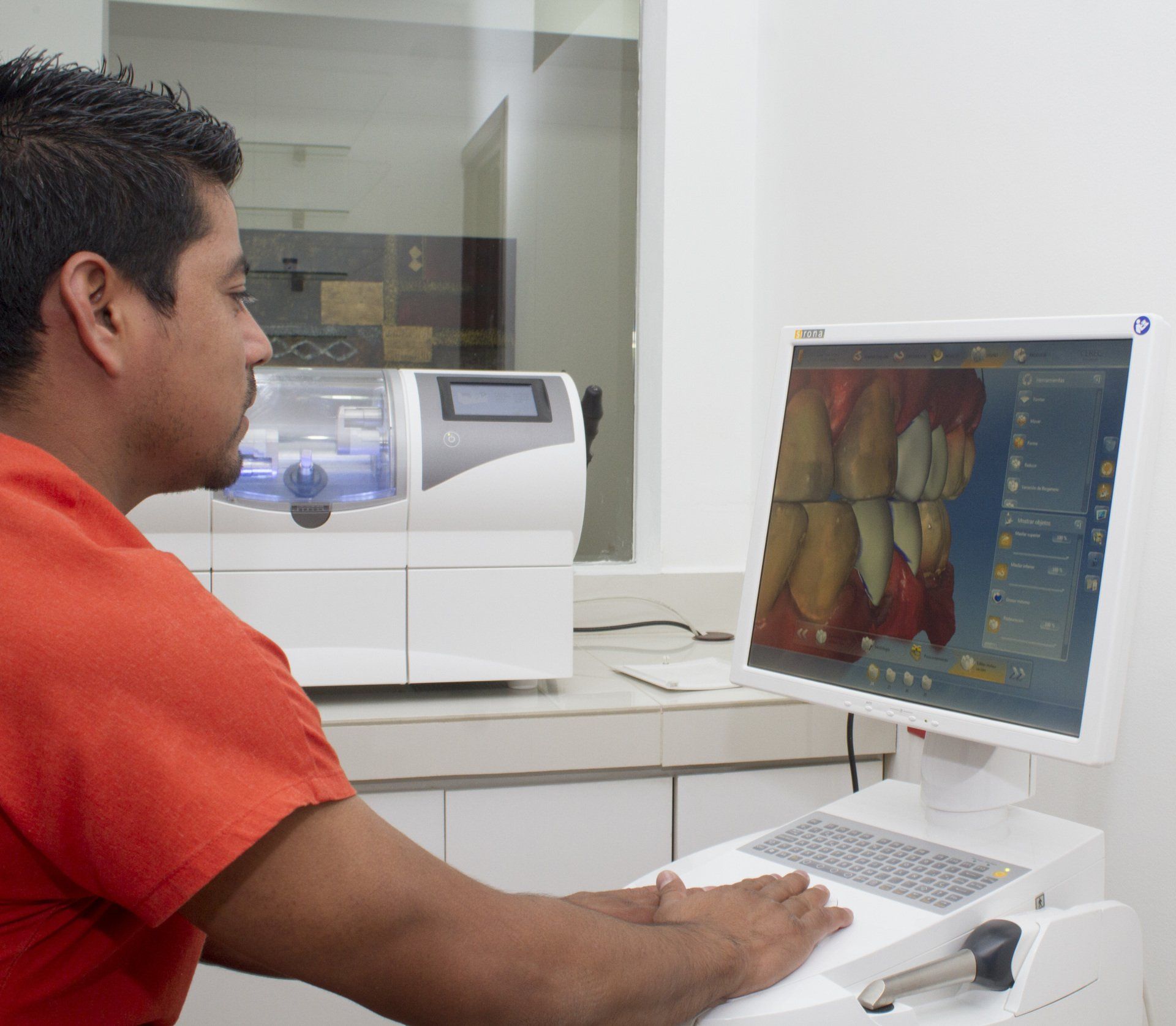
At Lorenzana & Dental Associates, we love our CEREC system - and our patients love it, too! Thanks to CEREC, we can give people the convenience of getting their teeth fixed (e.g. crowns, veneers) in as little as a single visit to our clinic. That is just impressive, right? But how did such an incredible technology as CEREC come into existence? Well, we will talk a little about that in this blog, which is the first in a series of blogs about this system. Let's get to it!
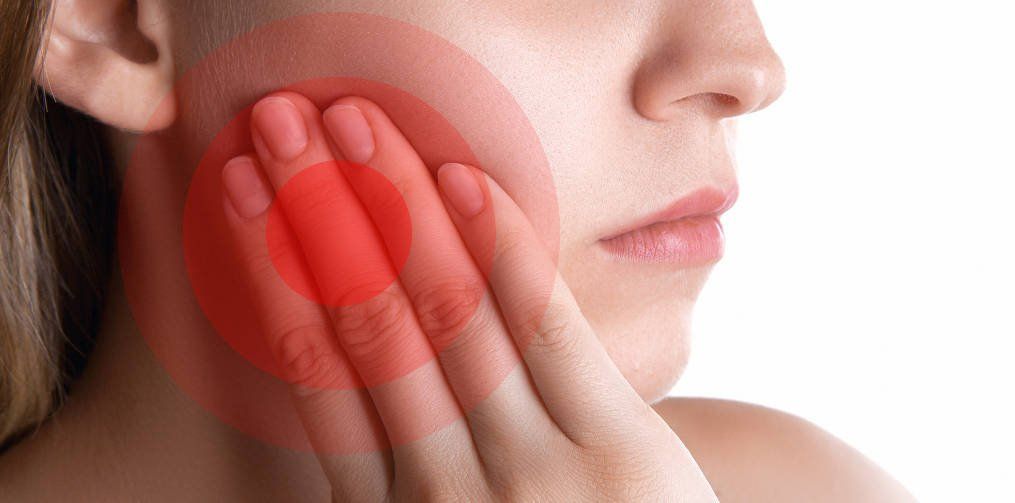
Temporomandibular joint disorders are conditions that cause discomfort and inhibit the proper functioning of the jaw joint and muscles that control jaw movement. Causes In most cases, the cause of TMJ disorders is not evident. However, here is a list of potential causes: External trauma, such as a hard hit to the head or jaw. Tooth grinding or jaw clenching. Poor alignment between top and bottom teeth. Excessive chewing (e.g. gum or fingernails). Overextending the TMJ while eating large things. Degenerative diseases. Symptoms There are various symptoms that could be related to TMJ disorders. Examples of these are the following: Pain in facial, jaw, neck or back muscles. Swelling. Muscle stiffness or limited movement of the jaw. Clicking, popping or grating sounds accompanied by pain when moving the jaw. Teeth not fitting comfortably together. Jaw not opening uniformly or locking. Headache or earache. Difficulty swallowing. Diagnosis There is not always a straightforward way of diagnosing TMJ disorders. Exact causes and symptoms are not clear, and that means the discomfort someone is experimenting could be due to different health issues. Your doctor will take your symptoms and medical history into consideration and then will examine areas of discomfort, including the head, neck, face, and jaw. The doctor might also use x-rays in the analysis of your case. Treatment Reversible Treatments Conservative treatments do not invade the tissues of the face, jaw, or joint, or involve surgery. Reversible treatments do not cause permanent changes in the structure or position of the jaw or teeth. It is advisable that you try these first, before considering more expensive and permanent ones. Muscle and ligament tightness can be helped with jaw stretching and relaxing exercises as advised by your doctor. If the jaw becomes locked, it may be necessary to manipulate the joint back into place under a general anaesthetic. The most common TMJ issues are temporary and do not get worse. Short-term use of pain relievers, such as ibuprofen, may be sufficient. A stabilization splint or a bite guard may provide relief. Stabilization splints should only be used for a short time and should not cause permanent changes in bite. Permanent Treatments There is often debate around the use of permanent methods to treat TMJ disorders. There are no long term studies that show the efficacy of these methods, plus they are extensive and often more expensive than reversible treatments. The bite may be adjusted by polishing teeth, using reconstructive dentistry, or fitting braces. A repositioning splint may be fitted, which over time will permanently change the position of the jaw, ligaments and muscles. There may be an effect on teeth alignment, so more dental work may be needed to adjust the teeth. There is even the option to replace the jaw joint with artificial implants, but it should be considered a last resort. Self-Care In many cases, self-care measures can help alleviate the symptoms of TMJ disorders: Eating soft foods. Applying cold or warm compresses. Avoiding excessive jaw movements (shouting, gum-chewing, and wide yawning, for instance). Practicing gentle jaw stretching and relaxing exercises. Resting the jaw as much as possible. SOURCES: National Institute of Dental and Craniofacial Research Health Navigator



